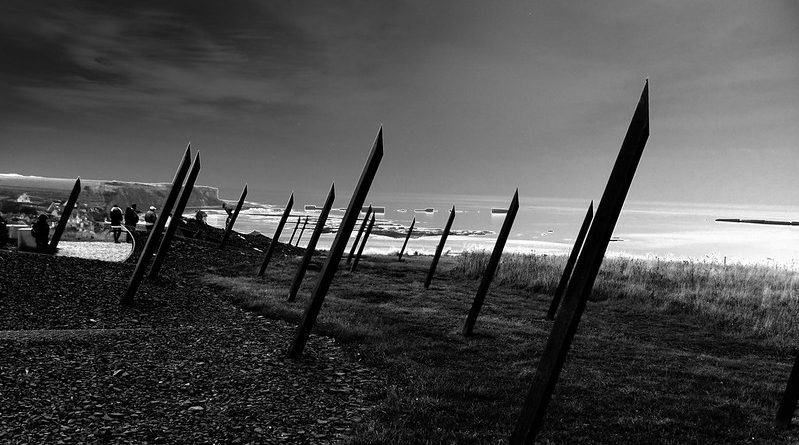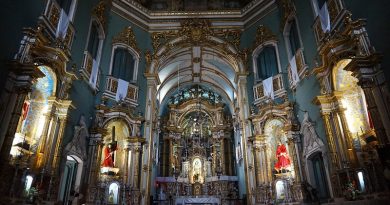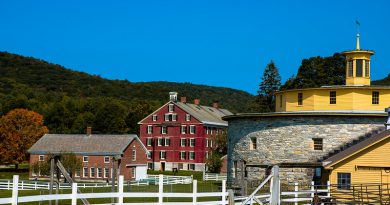World War II: The D-Day Landings
History Facts
Where: Normany coastline, Northern France
When: 1944
History: Site of a mighty and epic military landing of Allied troop which led to the defeat of Germany and the liberation of France
Go there for: the many memorial sites and the swathes of graves of unmarked commonwealth and American soldiers
Other attractions: the stunning Mont St Michel Abbey perched high on a rock
History of the D-Day Landings
During World War Two (1939 -1945), the so-called D-Day Beaches, stretching across the northern coast of Normandy between the beaches of Sword and Utah were the scene of the largest military operation ever mounted. The scale of the Allied ‘Operation Overlord’ launched on 6 June 1944 against Nazi Germany still seems amazing today; vast numbers of landing craft, part of a fleet of 7000 boats, hit the beaches and thousands upon thousands of Allied troops from the UK, USA, Canada and elsewhere swarmed onto German-held French soil. The landings were followed by the Battle of Normandy, 76 days of fighting, that eventually led to the defeat of the Nazis and the liberation of Europe.
As befits an operation of such scale and historical importance, there’s much still to be seen in the area. Caen’s Memorial Museum, housed in a striking building within a wonderfully landscaped park, gives a good overview of the events. From here you can make their way to the coast where you’ll find a well-tramped circuit of battle sites, cemeteries and memorials.
Key Sites to Visit
- At Bénouville, the Café Gondreé is a proudly maintained symbol of the landings. The plaque in the bar claims that it was the first house in France to be liberated on the night of the 5 to 6 June.
- East of the seaside town of Arromanches you can view one of the remaining prefabricated ports towed across the Channel by the Allies, Port Winston (named after British war prime minister Winston Churchill who proudly declared against the threat of Nazi war on the home front ‘we will fight them on the beaches’).
- Four miles west of the town, near Longues-sur-Mer, you can see the massive 152mm German guns, designed to hit targets around twelve miles away, still sitting in their concrete encampments.
- The harshest fighting of the campaign took place along Omaha Beach and the American cemetery overlooking that coastline is a powerful testament to the sacrifices of war with its rows upon rows of perfectly white crosses among immaculately kept grass. Traditionally, Commonwealth soldiers were buried where they fell. The 18 Commonwealth military cemeteries follow the advance of British and Canadian soldiers.
- Inland from Utah Beach, Ste-Mère-Eglise has another fascinating war museum. It was here that American parachutist John Steele, immortalised in the film The Longest Day, drifted down over the town and got stuck on the church steeple as the village became the first French settlement to be liberated.
- The Musée des Troupes Aéroportées remembers the many men involved in the aerial assault and explains the operations in detail.
Other Things to See and Do
Mont St Michel
Mont St Michel is France’s biggest tourist attraction outside Paris – a stunning Abbey perched on a tiny rock island in the middle of a shallow bay, architecturally tweaked and augmented over a period of a thousand years. It’s almost as famous for the tides of its bay. The difference in sea level between low and high tides, depending on the orbits of the moon and the sun, can be as much as 50ft. It’s an incredible sight to behold, all in the shadow of an equally amazing structure.
St. Michel is not just a tourist attraction, it’s a real place of worship. In recent years the French Catholic Church installed a young, progressive order of monks and nuns – average age 30 – to live and worship here. They even have their own website!
More Information
Le Mont Saint Michel
Website for the Abbey in French and English
Main Image: Greg Clarke, D-Day Anniversary, Flickr Creative Commons
By Kate Griffiths




